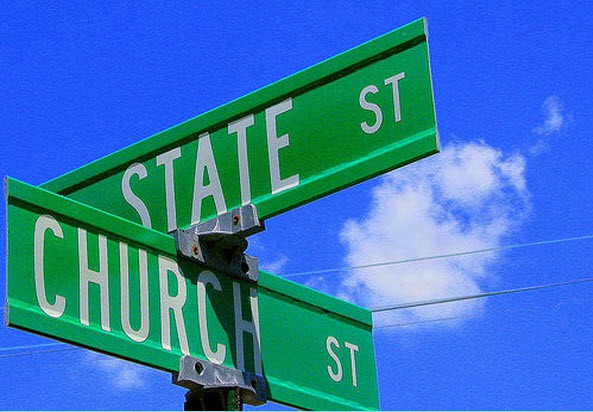Understanding the OGOD judgment
The role of religion in public schools is not settled quite yet
On Wednesday the Gauteng High Court handed down a judgment on the role and place of religion in public schools.
The case was initially brought by the Organisasie vir Godsdienste-Onderrig en Demokrasie (OGOD), an association that deals with constitutional violations concerning religion and public schools, against six public schools in Gauteng and the Western Cape. However, the relief sought by OGOD was to apply to any public school within South Africa, not just the six listed in their application. The Ministers of Education and Justice were also joined in proceedings. Also, a number of civil society organisations, including CASAC (Council for the Advancement of the South African Constitution), the trade union Solidarity and Afriforum were joined as friends of the court.
CASAC, represented by SECTION27, argued that some of the practices adopted by schools are inconsistent with the Constitution. Other amicus, Cause for Justice, the South African Council for the Protection and Promotion of Religious Rights and Freedom and Afriforum argued in favour of maintaining a place for religion within public schools over a secular approach.
In essence, the OGOD’s application asked the court for a declaration confirming that certain types of activity are breaches of the National Religion Policy and also unconstitutional. These include promoting only one religion, associating the school with a particular religion and requiring a learner to disclose adherence to a specific religion. OGOD also sought interdicts against seventy-one different kinds of conduct by schools, including “having a value that learners strive towards faith”, referring to any deity in a school song and prayers dedicated to a specific God, on the grounds that this conduct did not comply with national policies and legislation. OGOD also attempted to interdict the teaching of creationism.
The schools relied on section 15(2) of the Constitution. Under section 15, religious observances may take place at state and state-aided institutions if they are conducted in an equitable manner and that attendance is free and voluntary. The Schools Act makes a similar provision for religious observance provided that it is in line with the Constitution.
The schools argued that they were entitled to the right to freedom of religion under the Constitution and to have an ethos that referenced a particular religion. Also, the schools argued that section 15(2) allowed for religious practices and observances to be conducted at schools, if students and staff attendance is free and voluntary as opposed to compulsory or coerced.
The court found that the interdicts sought by OGOD could not be granted on procedural grounds, namely that the application had been incorrectly formulated to rely directly on the Constitution rather than the specific school policies and rules as formulated by the School Governing Bodies (SGBs). Also, the court found that the provincial governments should have been joined as parties to the application. So the court did not rule specifically on whether the conduct highlighted by OGOD, including the teaching of creationism and the handing out of Bibles was unlawful.
Despite finding that the interdicts could not be granted, the court did decide on a narrower issue, where a public school endorses one religion to the exclusion of others. The six schools joined in the application all based their ethos on Christian values. The question the court considered was whether this adoption and endorsement of Christianity by public schools was in line with the Constitution and the recognition of diversity.
The court found that there was no law or provision in the Constitution which gave public schools and SGBs the right to adopt an ethos from one religion to the exclusion of others. All that the laws provided for was that SGBs could make rules that provided for religious policies and observances to be conducted on an equitable basis. This means that schools must treat different religions with an “even-hand”, which includes not favouring one and excluding other religions.
The court held that public schools may not adopt one religion to the exclusion of all others. The court made a declaratory order confirming that a public school cannot promote that it adheres predominantly to only one religion to the exclusion of others or hold itself out as promoting the interests of one religion over others.
In essence, this means that public schools may still conduct religious observances and promote religious values provided that these observances and values recognise a diversity of religions (including atheism or an absence of belief) and do not place one religion above all others. How this practically impacts the formulation of a school’s ethos remains to be seen.
Support independent journalism
Donate using Payfast

Don't miss out on the latest news
We respect your privacy, and promise we won't spam you.
Next: Woodstock residents facing eviction describe neglect by landlord
Previous: Eviction of homeless Loop Street immigrants was without court order
Letters
Dear Editor
To add to all the known religions, some of which are not registered, including atheism, there are a minimum of 100 000 religions. A religion being defined as a set of practices which a person adheres to because he/she believes they are or will be beneficial.
In practice, everyone believes in something or believes in nothing, so that anyone who has a belief or non-belief cannot promote their beliefs over anyone else.
Many people if not most believe that education brings success and so we can conclude that a school in educating children is practicing a particular belief and should be prohibited.
© 2017 GroundUp. 
This article is licensed under a Creative Commons Attribution-NoDerivatives 4.0 International License.
You may republish this article, so long as you credit the authors and GroundUp, and do not change the text. Please include a link back to the original article.

